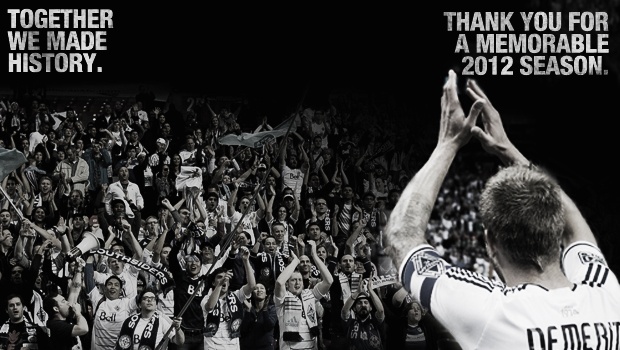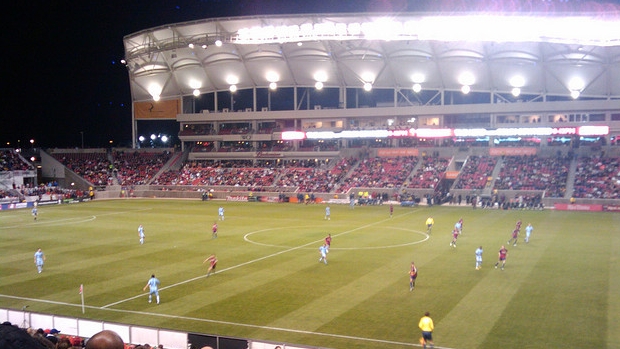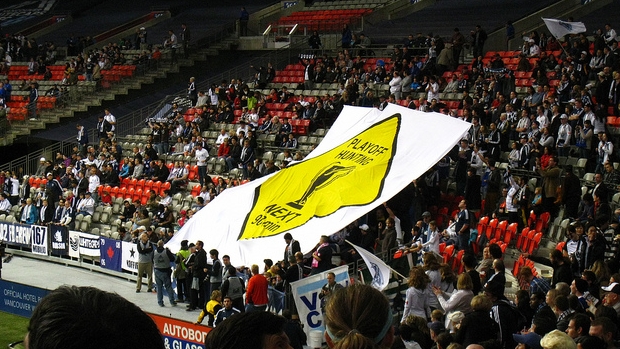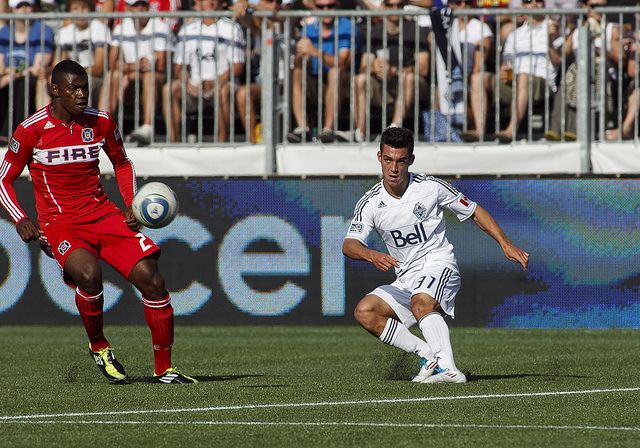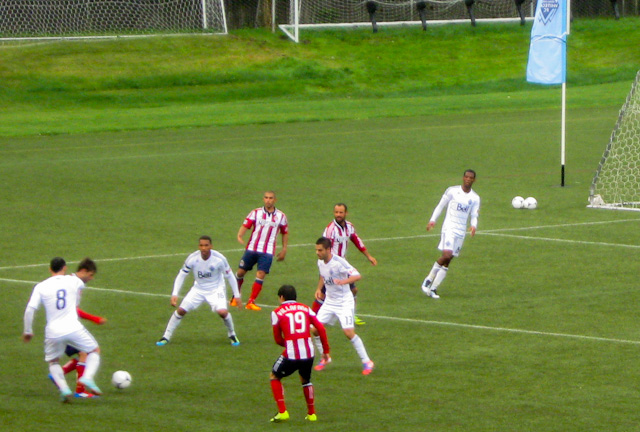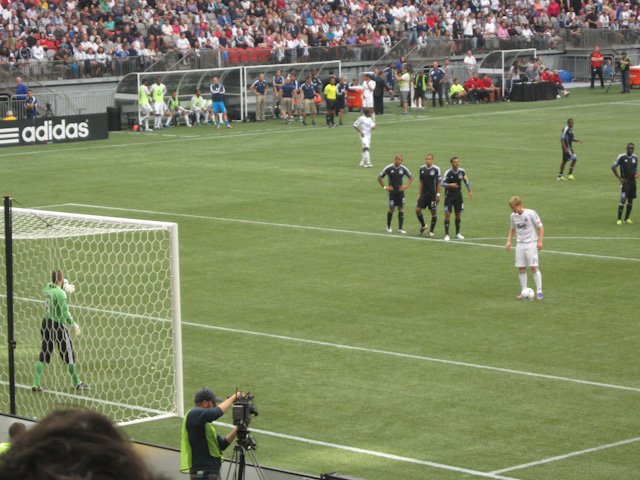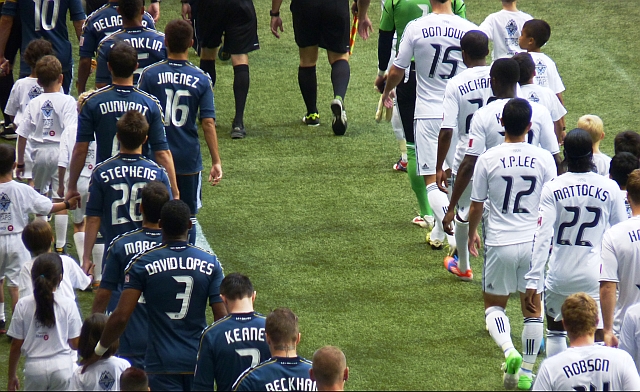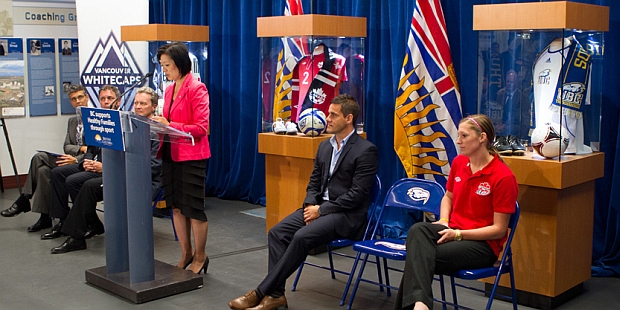
Jon Herdman and Chelsea Buckland of the Canada women’s national team look on as Ida Chong announces the Whitecaps’ National Soccer Development Centre in September. Photo Kai Jacobson/The Ubyssey
I’ve been going through the agreements between the Vancouver Whitecaps and UBC on the new Whitecaps training centre, and there’s one element conspicuous by its absence: The Canadian women’s national soccer team.
When the province unveiled plans for the National Soccer Development Centre in September, it was identified as a “west-coast base” for the Canadian women’s national team, with cabinet minister Ida Chong going back down memory lane to the Olympics and manager Jon Herdman and player Chelsea Buckland in attendance. “The national team will be here, we’ll make use of these facilities as long as we’re welcome, and this may be our little tipping point,” Herdman said at the time.
When you read the agreements for how the fields to be used, the guarantees, which promise 75-25 and 85-15 per cent access for the new turf and grass fields respectively, are solely between the Whitecaps and UBC, with the ‘Caps getting the larger share. The conference also promised community access would make up 50 per cent of the facility’s use, and that is expected to come from each side’s allocation; UBC has suggested the 50-50 split is between internal and external groups, as UBC has suggested. (UBC Board of Governors proposals list “National soccer team” as a primary user of the facility.)
With a women’s national team camp in Vancouver coming up from December 12-20 and no location yet announced, where does the program fit into these commitments?
Here’s what Whitecaps COO Rachel Lewis said about the relationship in an interview I did for the Ubyssey:
We have a very close relationship with the CSA, and obviously with the Canadian Women’s National Team being based here, and [the] 2015 World Cup coming up, we hope that we’re going to be able to be a base for the team. Obviously, Jon Herdman’s working through his plans and we’re not sure yet what his training plans are for the coming few years, but if we can support that group in any way we’re obviously going to look to do so, we want to see them be successful … We’re really closely linked with Jon and his team on the Girls Elite side as well as supporting the national team.
But the “hope to be a base” for the team is a bit of a change in terminology from what seemed to be a sealed deal at the press conference. The CSA refused comment, saying that there was no official agreement between the association and the Caps. Lewis confirmed there was no agreement.
Nothing formal, really what we’ve said to Jon and the CSA is, “We’d like to understand what your needs are and what your plans are up in the leadup to 2015 and beyond, and tell us how we can support you.” These conversations are undergoing, but it’s still quite preliminary, as we haven’t even moved out to the campus yet.
There’s nothing to say there won’t be significant partnership – a CSA spokesperson suggested that the team was currently conducting siting meetings before deciding where in Vancouver to hold the practices, so this month’s camp could still be at UBC’s existing pitches. The new fields and training facility aren’t near being completed yet, and hey, it’s not like the CSA are paying for it, so the Whitecaps don’t have to guarantee the women’s team anything.
But if you got a different impression at the press conference in September, it’s clear that for now, at least, the National Soccer Development Centre isn’t quite a home for the program.
